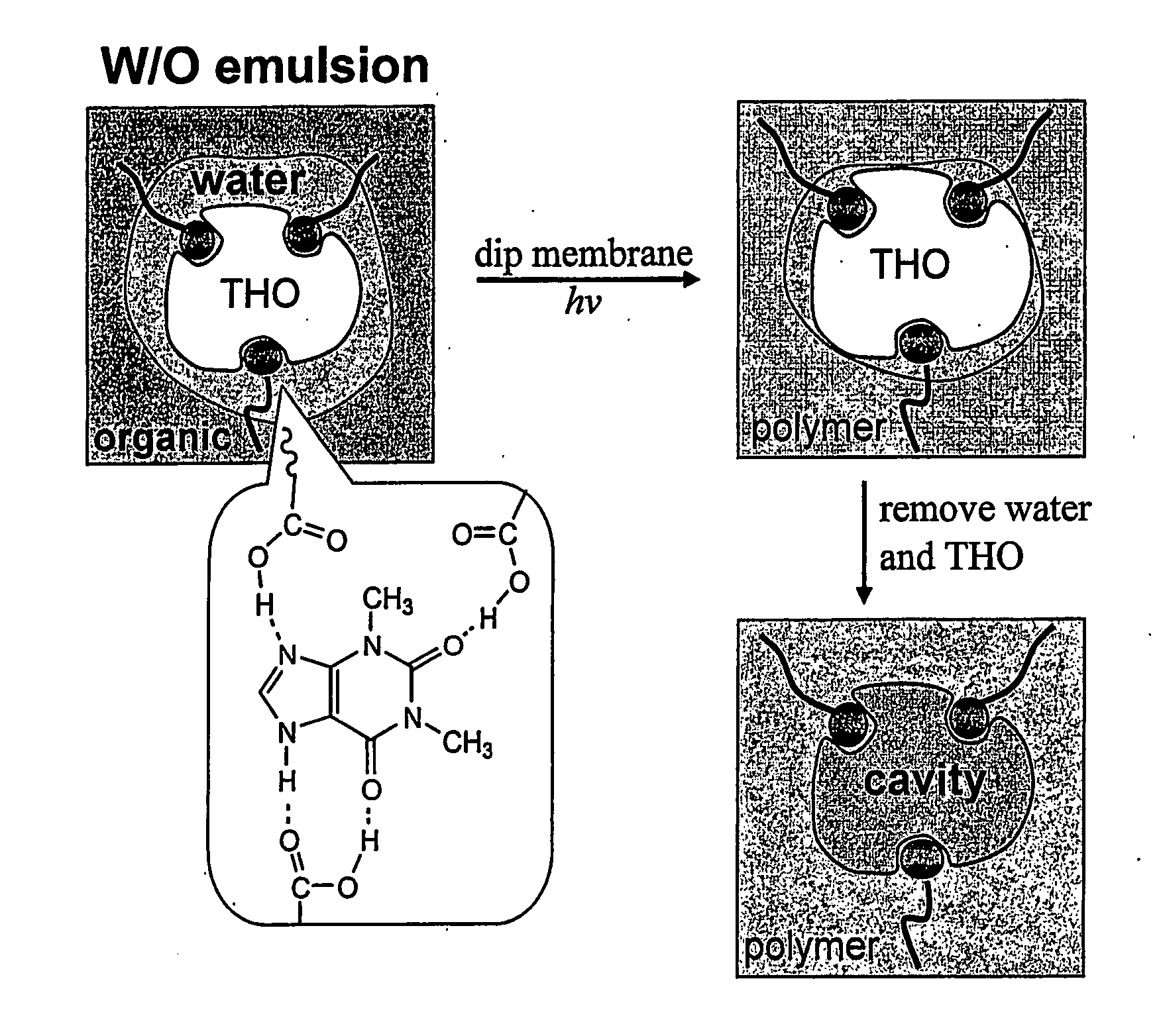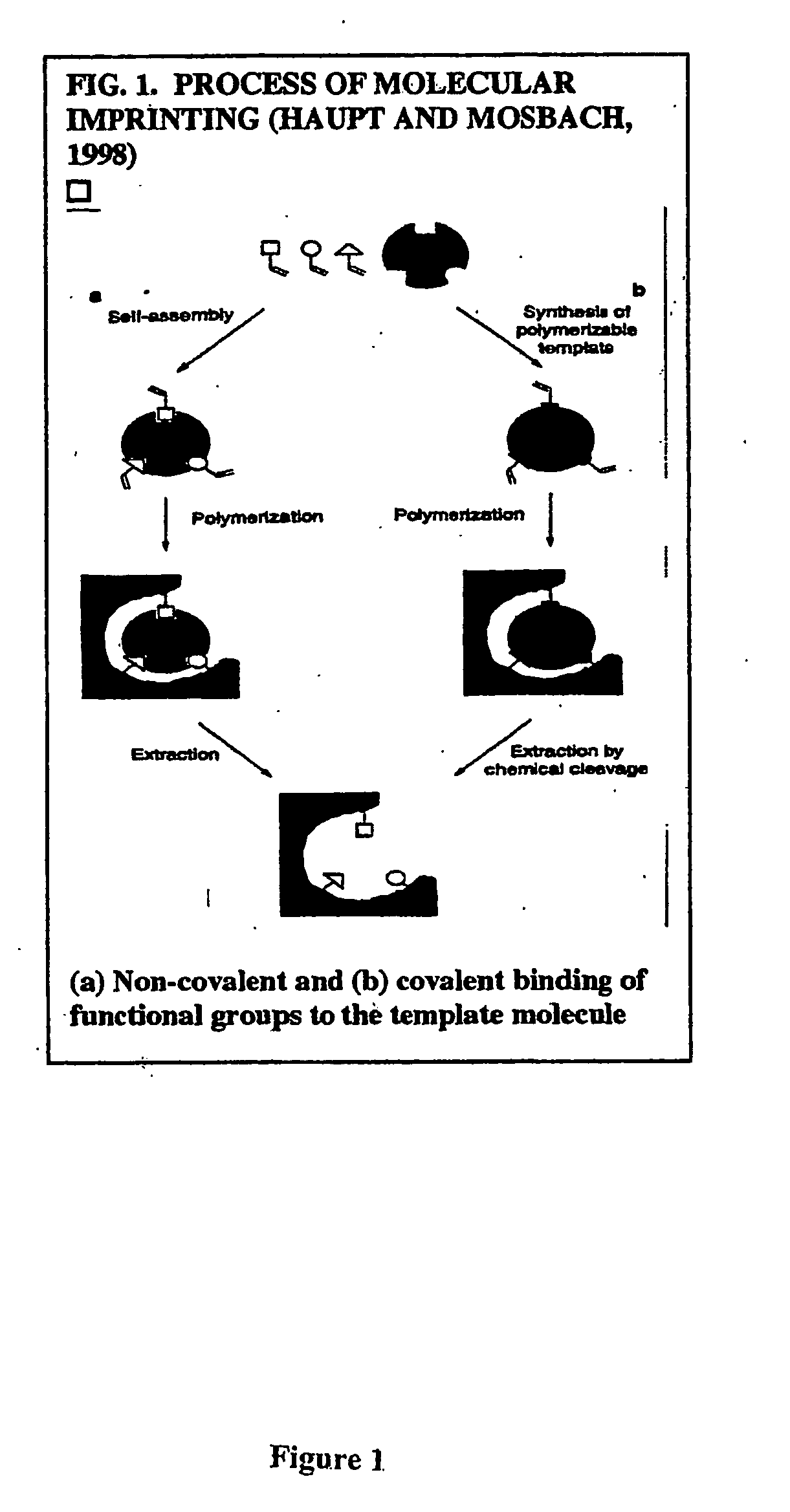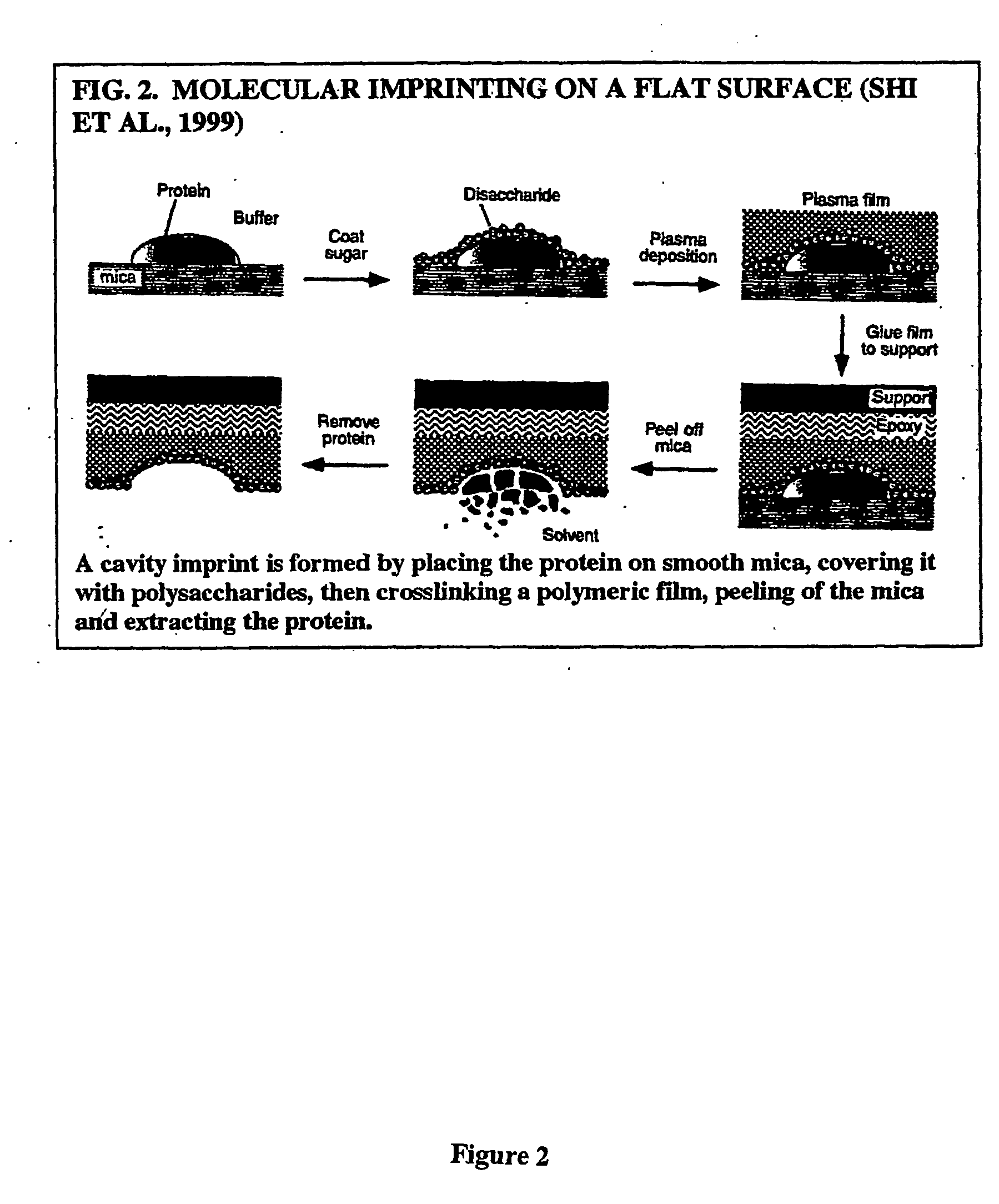Imprinting a substrate for separation of a target molecule from a fluid medium
a technology for imprinting substrates and target molecules, which is applied in the direction of other chemical processes, instruments, transportation and packaging, etc., can solve the problems of difficult polymerization in their presence, few successful attempts to imprint proteins, and the possibility of forming h-bonds between the two functional monomers, etc., to achieve high selective recognition and binding sites, and simplify the process of the process.
- Summary
- Abstract
- Description
- Claims
- Application Information
AI Technical Summary
Benefits of technology
Problems solved by technology
Method used
Image
Examples
example 1
Materials
[0072] Toluene, mesitylene (1,3,5-trimethylbenzene), oleic acid, 2-(trifluoromethyl)acrylic acid (“TFMAA”), theophylline (“THO”: 1,3-Dimethylxanthine), and caffeine (“CAF”: 1,3,7-Triinethylxanthine) were purchased from Sigma-Aldrich Co. Divinylbenzene (“DVB”, Aldrich Chemical Co.) was used after treatment with silica gel to remove an inhibitor (FIG. 6). Polypropylene (“PP”) membranes (Celgard®2500 microporous flat sheet polypropylene membrane, thickness: 25 μm, porosity: 55%, pore size: 0.05-0.2 μm wide 0.2-0.5 μm long, Celgard Inc., Charlotte, N.C.) were used as microporous substrates.
example 2
Preparation of Molecularly Imprinted Polymer
[0073] 0.56 g(2.0×10−3 mol) of oleic acid, 0.28 g(2.0×10−3 mol) of 2-(trifluoromethyl)acrylic acid (“TFMAA”), and 0.23 g (3.0×10−4 mol) of N-ribitol L-glutamic acid dioleyl diester (2C18Δ9GE, emulsion stabilizer14) were dissolved in 60 ml of toluene / DVB (1:2 (v / v)), which was mixed with 30 ml aqueous solution containing 0.14 g (8×10−4 mol) of theophylline. Although methacrylic acid (“MAA”, pKa=4.6) and TFMAA (pKa=2.3) have been used as functional monomers for various template molecules, TFMAA was chosen since it was more acidic and could increase hydrogen-bonding with the template (Mosbach et al., J. Am. Chem. Soc. 123:12420-12421 (2001); Matsui et al., Anal Chem. 72:3286 (2000); and Yilmaz et al., Angew. Chem. Int. Ed. 39:2115-2118 (2000), which are hereby incorporated by reference in its entirety). Using only oleic acid (without TFMAA) as a functional monomer, selectivity for THO over CAF was hardly noticeable. The mixture was sonicated...
example 3
Characterization
[0075] Attenuated total reflection Fourier transform infrared spectroscopy (“ATR / FT-IR”) (Magna-IR 550 Series II, Nicolet Instruments, Madison, Wis.) was used to confirm polymerization and to measure the degree of grafting onto the polypropylene membrane under UV irradiation. Using an incident angle of 45°, the penetration of IR sample depth was approximately 0.1-1.0 μm (Nicolet User's Manual for Infrared Spectrometer, Model# 0012-490(T) Nicolet Magna-IR, Thermo Nicolet Corp, Madison, Wis., which is hereby incorporated by reference in its entirety). Each spectrum was recorded at aresolution of 4.0 cm−1. The absorbance peak heights at 1376, and 1458 cm−1 were due to C—H bending of polypropylene membrane (Wang et al., J. Chem. Tech. Biotech. 70:355-362 (1997) and Pretsch et al., Table of Spectral Data for Structure Determination of Organic Compounds 2nd ed.; Fresenius, W., Huber, J. K. F., Pungor, E., Rechnitz, G. A., Simon, W., West, Th. S., Eds.; Springer-Verlag: Be...
PUM
| Property | Measurement | Unit |
|---|---|---|
| hydrophilic | aaaaa | aaaaa |
| hydrophobic | aaaaa | aaaaa |
| emulsion | aaaaa | aaaaa |
Abstract
Description
Claims
Application Information
 Login to View More
Login to View More - R&D
- Intellectual Property
- Life Sciences
- Materials
- Tech Scout
- Unparalleled Data Quality
- Higher Quality Content
- 60% Fewer Hallucinations
Browse by: Latest US Patents, China's latest patents, Technical Efficacy Thesaurus, Application Domain, Technology Topic, Popular Technical Reports.
© 2025 PatSnap. All rights reserved.Legal|Privacy policy|Modern Slavery Act Transparency Statement|Sitemap|About US| Contact US: help@patsnap.com



